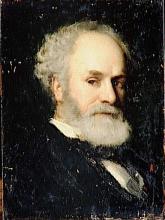Helium is the second most abundant element in the universe. However, its existence was not discovered until 1868. On August 18 of that year, in the then small town of Guntur in the State of Hyderabad, the French astronomer Jules Janssen, was conducting an observation of a solar eclipse looking for the presence of oxygen in the Sun. While analysing the solar spectrum, Janssen noted the presence of a bright yellow spectral line which he initially mistook to represent the presence of Sodium. However, he later concluded that it indicated the existence of a hitherto unknown element, which was later confirmed to be Helium.
The early reaction to Janssen's discovery was ridicule as no element had been discovered in space prior to being discovered on Earth. But his case was strengthened when Joseph Lockyer, an English astronomer, also made similar observations later in the same year. It was Lockyer and the English chemist, Edward Frankland, who gave the unknown element its name, Helium, from the Greek word for the Sun, helios.

